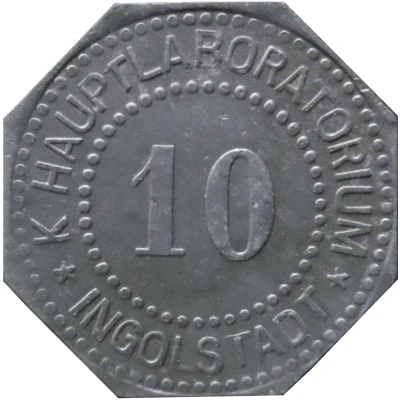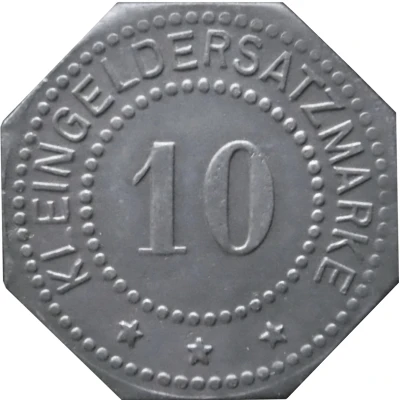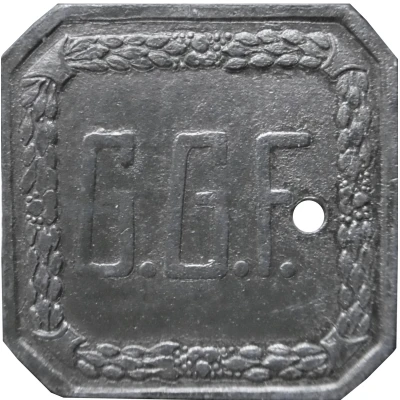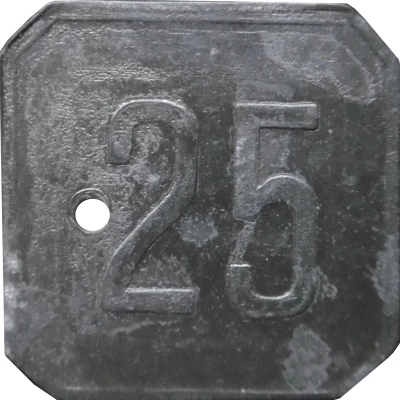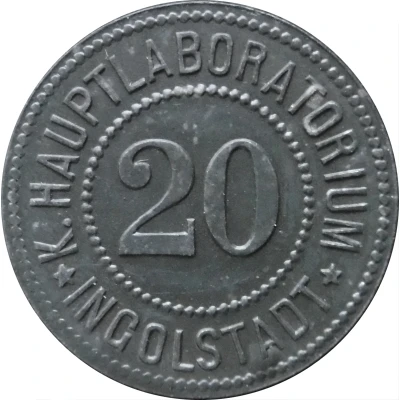
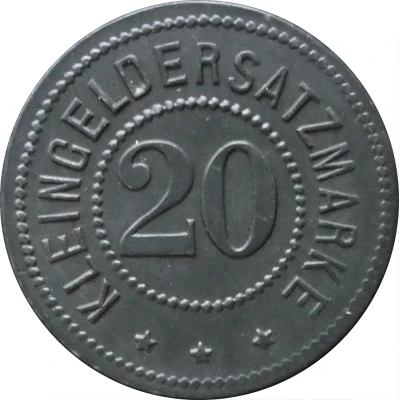

© Willem63 (CC BY-NC-SA)
20 Pfennigs - Ingolstadt (K. Hauptlaboratorium) ND
| Zinc | 4.6 g | 27.2 mm |
| Issuer | City of Ingolstadt (Federal state of Bavaria) |
|---|---|
| Issuing entity | K. Hauptlaboratorium |
| Type | Standard circulation coin |
| Value | 20 Pfennigs (20 Pfennige) (0.20) |
| Currency | Mark (1914-1924) |
| Composition | Zinc |
| Weight | 4.6 g |
| Diameter | 27.2 mm |
| Thickness | 1.4 mm |
| Shape | Round |
| Technique | Milled |
| Orientation | Medal alignment ↑↑ |
| Demonetized | Yes |
| Updated | 2024-10-04 |
| Numista | N#272326 |
|---|---|
| Rarity index | 95% |
Reverse
Script: Latin
Lettering:
KLEINGELDERSATZMARKE
20
***
Edge
Plain
Comment
(Menzel: BBB)Interesting fact
One interesting fact about the 20 Pfennigs - Ingolstadt (K. Hauptlaboratorium) ND coin is that it was minted during a time when Germany was going through a period of rapid inflation, known as the "Inflation of the 1920s." This inflation was caused by a combination of factors, including the government printing too much money and the cost of World War I reparations. As a result, the value of the German mark (the country's currency at the time) plummeted, and everyday items like bread and milk became extremely expensive. The 20 Pfennigs coin, which was worth a small fraction of a mark, was one of the few coins that remained in circulation during this time, as many other coins had become worthless due to inflation. Despite the economic challenges of the time, the 20 Pfennigs coin remains a popular collector's item today, serving as a reminder of a tumultuous period in German history.
